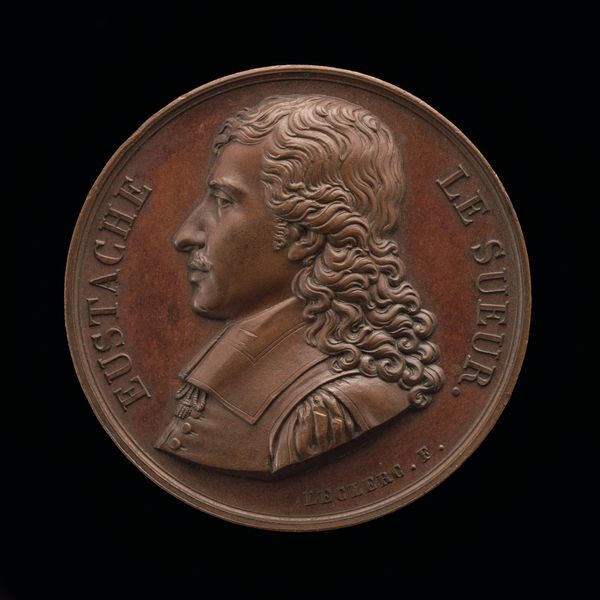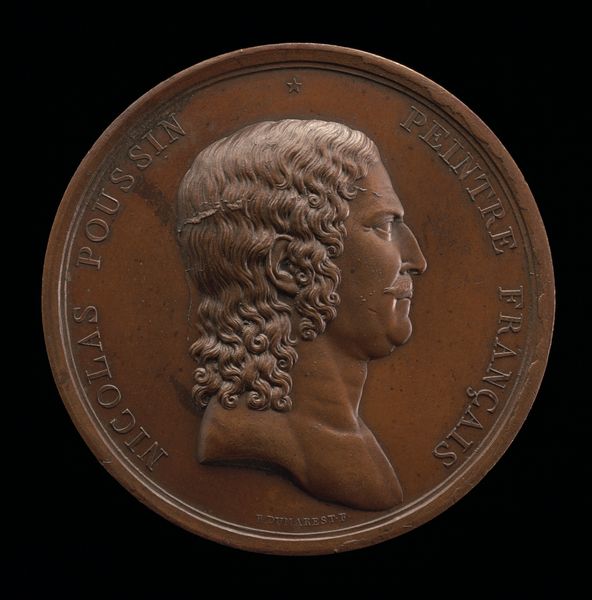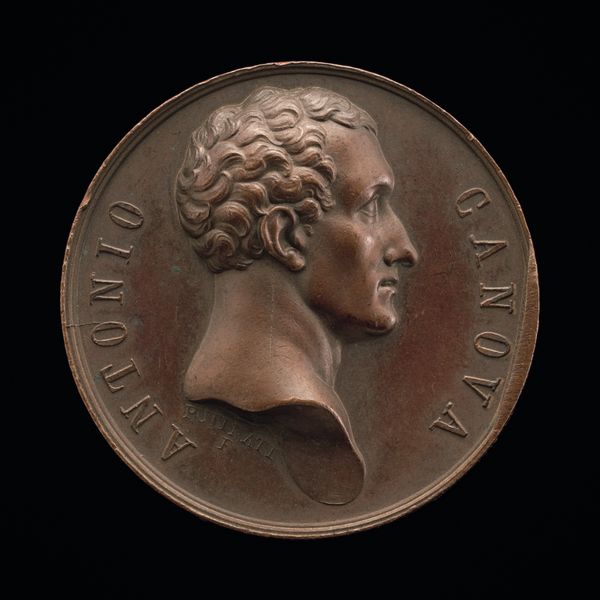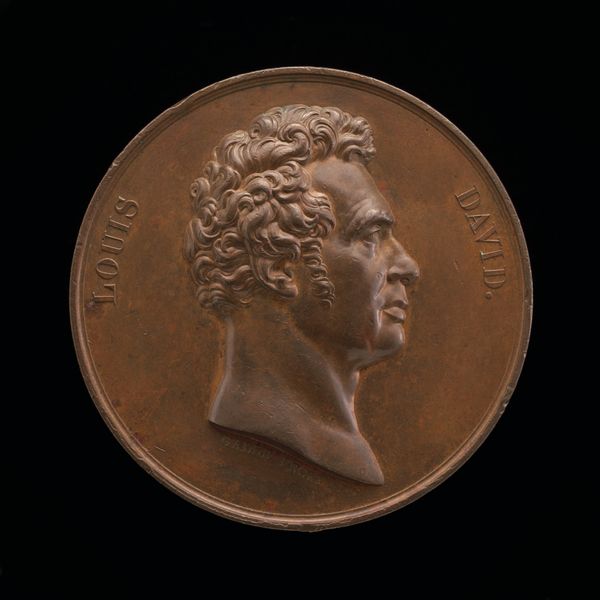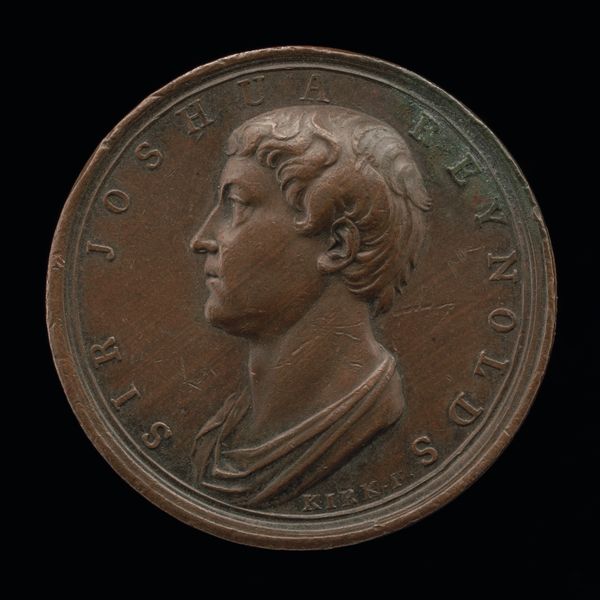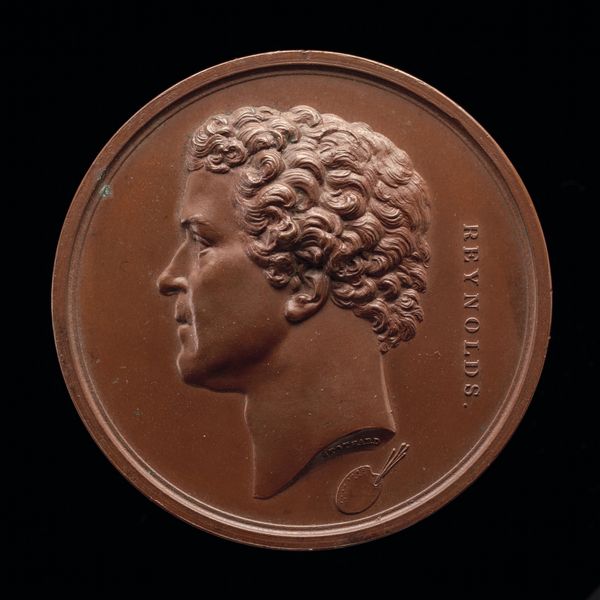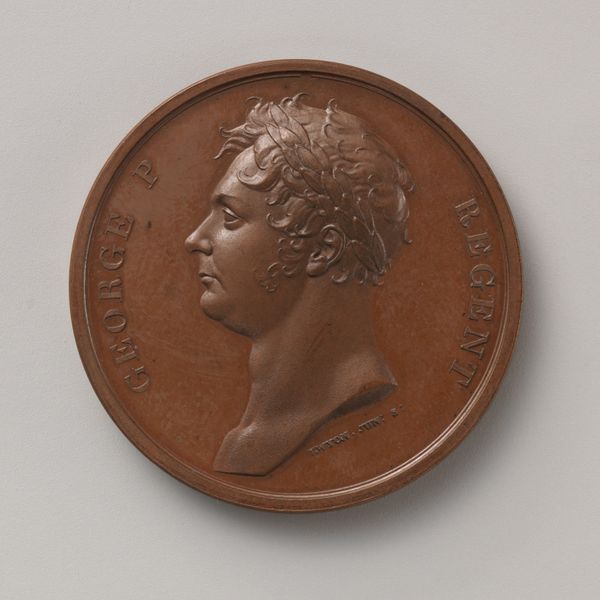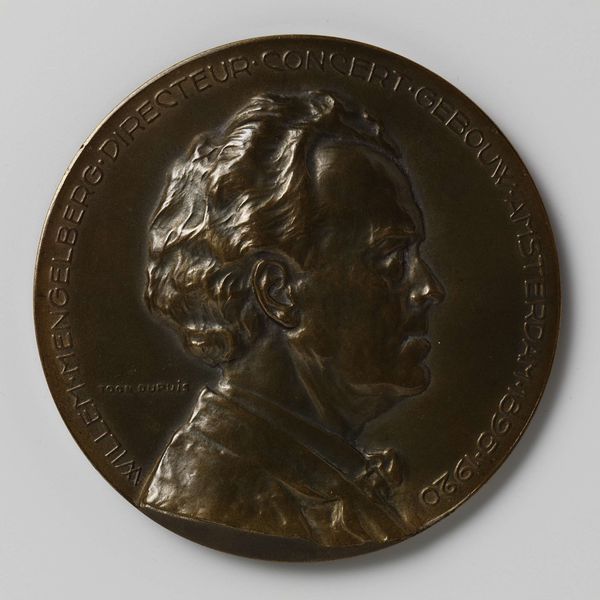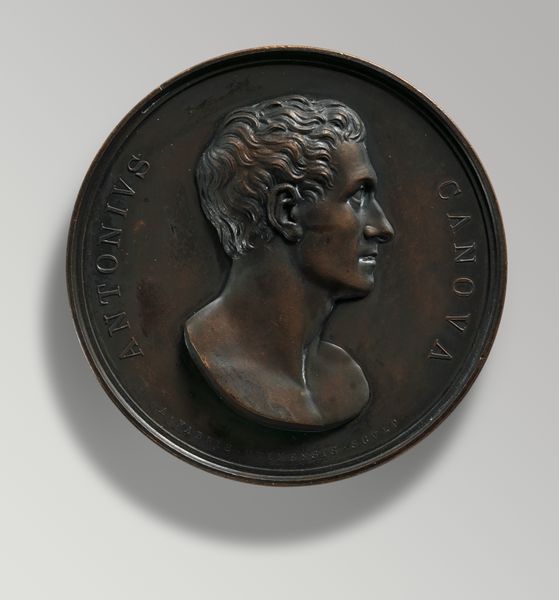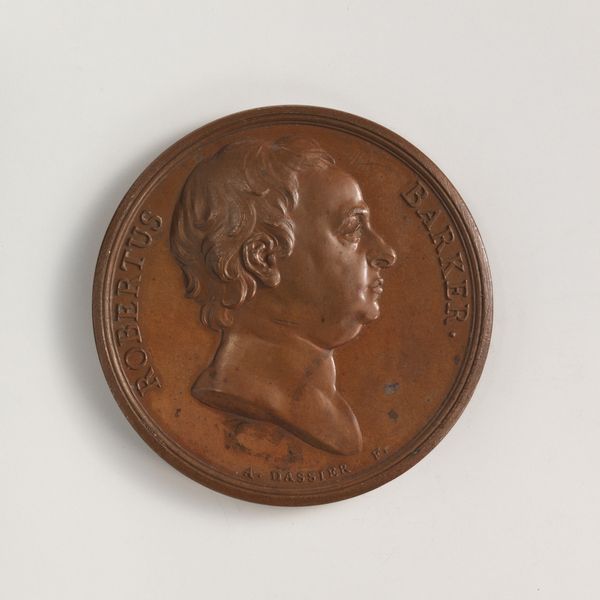![Bertel Thorvaldsen, 1770-1844, Sculptor [obverse] by Karl Friedrich Voigt](/_next/image?url=https%3A%2F%2Fd2w8kbdekdi1gv.cloudfront.net%2FeyJidWNrZXQiOiAiYXJ0ZXJhLWltYWdlcy1idWNrZXQiLCAia2V5IjogImFydHdvcmtzLzhlYzIzODQ2LWJmMDMtNDk0OC04OGRlLWUzM2Q1NjhjMWRjYS84ZWMyMzg0Ni1iZjAzLTQ5NDgtODhkZS1lMzNkNTY4YzFkY2FfZnVsbC5qcGciLCAiZWRpdHMiOiB7InJlc2l6ZSI6IHsid2lkdGgiOiAxOTIwLCAiaGVpZ2h0IjogMTkyMCwgImZpdCI6ICJpbnNpZGUifX19&w=3840&q=75)
bronze, sculpture
#
neoclacissism
#
sculpture
#
classical-realism
#
bronze
#
sculpture
Dimensions: overall (diameter): 4.55 cm (1 13/16 in.)
Copyright: National Gallery of Art: CC0 1.0
Curator: This is a bronze sculpture from 1837, "Bertel Thorvaldsen, 1770-1844, Sculptor" by Karl Friedrich Voigt. The work commemorates the famous Neoclassical sculptor. What are your initial impressions? Editor: It's quite austere, almost stoic. The profile is sharply defined, and there's a real sense of classical restraint. It feels almost like a Roman coin in its simplicity. Curator: Indeed, its bronze materiality evokes that historical precedent intentionally. This medal represents Voigt's attempt to immortalize Thorvaldsen, situating him within a lineage of celebrated artists, akin to figures memorialized on ancient currency. How the material of bronze interacts with processes like casting— it gives the piece both weight and a sense of permanence that aligns perfectly with Neoclassical ideals of lasting legacy. Editor: That’s interesting—thinking about the choices inherent in bronze. It raises a question about accessibility and power, though. Bronze was and still is a valuable metal. Commemorating an artist in this medium signals a certain level of establishment endorsement and perhaps speaks to who gets remembered, and how. Who had the resources to commission and produce this? What statements does this say about Voigt's relationship with his patron? Curator: Absolutely. Examining its creation inevitably confronts these hierarchical structures. Voigt was deeply involved in minting processes within specific socio-political contexts. Analyzing these circumstances enhances our comprehension. In that sense, a medal is a very portable form of propaganda. Editor: Precisely! This wasn't merely an artistic homage; it’s a cultural object embedded with complex agendas around artistic legacy, national identity, and class distinctions, that have echoes to this day. This work acts as both document and assertion. Curator: Well put. By examining not only the artistic skill, but also the networks that supported its creation, the politics of representation come clearly into focus. Editor: Seeing it as a node in broader networks certainly reframes how we engage with the sculpture itself. Curator: Indeed, thinking about the work from these differing, but intersecting viewpoints yields a fuller appreciation for the choices inherent to its crafting, its social significance.
Comments
No comments
Be the first to comment and join the conversation on the ultimate creative platform.
